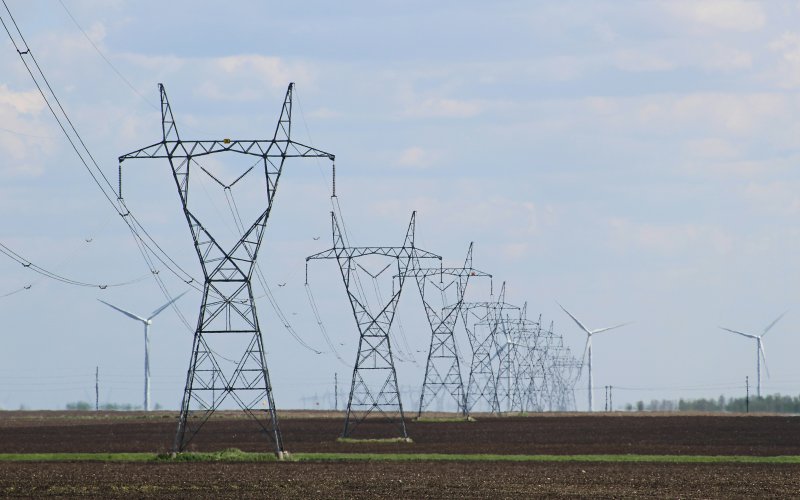UAlbany, UConn Researchers Partner to Improve Grid Resilience Through $2.63 Million Investment from DOE

By Mike Nolan
ALBANY, N.Y. (July 2, 2024) — As extreme weather events become more frequent, the University at Albany and University of Connecticut (UConn) are partnering to improve Northeast U.S. power grid resilience.
On Thursday, the U.S. Department of Energy (DOE) announced $4.6 million for six projects that will conduct grid resilience analysis and modeling to strengthen and modernize the power grid against extreme weather.
Researchers from UAlbany and UConn, along with several other partners, were selected for two of the projects, totaling $2.63 million, that will focus on communities in the Northeast.
“We are thrilled to partner once again with UConn, along with other researchers and industry innovators, to help strengthen the power grid for vulnerable Northeast communities,” said Chris Thorncroft, director of UAlbany’s Atmospheric Sciences Research Center and Center of Excellence in Weather & Climate Analytics. “This work will advance research and cutting-edge technologies to improve energy industry efficiency and reliability in the face of a rapidly changing climate and global transition to clean energy sources.”
“The northeastern United States is the exemplar regional case for energy transition to electrification and renewables while highly exposed to risk of disasters from natural hazards, such as hurricanes, severe nor’easters and winter storms,” said professor Emmanouil Anagnostou, interim director of the UConn Tech Park and director of the Eversource Energy Center. “These risks are projected to increase in severity and frequency across the region, as are heat waves and intense precipitation events, creating unique challenges to power grid resilience.”
Building a Stronger, Cleaner Electric Grid
Earlier this year, the DOE called for submissions for Grid Resilience Analysis and Climate Change Impacts (GRACI) funding. The six selected projects will use risk assessments and modeling to support recipients of the Bipartisan Infrastructure Law’s Grid Resilience State and Tribal Formula Grants, which are designed to strengthen and modernize America’s power grid against wildfires, extreme weather and other natural disasters that are exacerbated by the climate crisis.
“Keeping the lights on for communities across the country is a primary goal of the Grid Deployment Office (GDO),” said Maria Robinson, director of the GDO at the DOE. “GDO provides multiple financial mechanisms and investment programs to support state efforts, but this is not always enough. Each geographic region is different, with varying extreme weather impact challenges and grid resilience goals. This program will allow states to leverage existing tools, methods and processes to help identify a solution that works for their individual region, while providing the highest level of community benefits.”
In the Northeast, researchers at UAlbany and UConn will work together to provide risk assessments and grid resilience investment guidance to several states in the region. UAlbany will use numerical weather prediction models and leverage previous climate change studies to identify key trends across the states for different climate hazards and potential climate scenarios. UConn will use an outage prediction model, along with risk assessment tools, that takes into account the intersection of climate, outage and socioeconomic risk to drive grid resilience recommendations.
Through a separate project, Pointerra, a 3D visualization and analytics company, will collaborate with three electric utilities (Avangrid, Eversource, National Grid) and three university partners (UAlbany, UConn and Cornell University) to develop a cost-benefit methodology to determine the long-term value of grid resilience investments in the Northeast.
“We are proud to partner on this timely and necessary research to strengthen and modernize the electric grid in the Northeast,” said Jorge Gonzalez Cruz, Professor of Empire Innovation at UAlbany’s Atmospheric Sciences Research Center. “Energy infrastructure anchors economic activity and community wellbeing. However, the increasing frequency of extreme weather presents a growing risk to power grid resiliency, particularly in low income and rural communities. These challenges are amplified by rapid changes to incorporate electrification and the transition to renewable power generation.”
“Our partnerships with DOE and the northeastern utilities (National Grid, Avangrid, Eversource) will develop greater grid resilience strategies in the face of changing climate and extreme weather," added Jan Timothy Woodcock, director of operations for the Center of Excellence in Weather & Climate Analytics.
Empowering the Energy Industry
These projects add to UAlbany and UConn’s growing research collaboration at the intersection between weather, climate and the energy industry. The two universities comprise the Center for Weather Innovation and Smart Energy Resilience (WISER). Backed by a grant from the National Science Foundation, WISER aims to leverage the research and expertise at UAlbany and UConn to create advanced weather- and climate-based solutions for the energy industry, now and in the future.
In addition, New York State Electric & Gas and Rochester Gas & Electric partnered with the two institutions in 2021 to develop a customizable outage prediction system that can enhance storm preparedness and response efforts for utility companies.
“Our partnerships with DOE and the northeastern utilities (National Grid, Avangrid, Eversource) will develop greater grid resilience strategies in the face of changing climate and extreme weather," added Jan Timothy Woodcock, director of operations for the Center of Excellence in Weather & Climate Analytics.
“These projects highlight the continuing partnership between UAlbany and the University of Connecticut, bringing together preeminent expertise in climate and energy,” said Jeff Freedman, research faculty at UAlbany’s Atmospheric Sciences Research Center. “We look forward to working together to identify and recommend efficient pathways for states and utilities to follow to ensure a just and dependable energy future.”
The projects under the GRACI program will be managed by ENERGYWERX, a collaboration made possible through a partnership agreement set up by DOE’s Office of Technology of Transitions. The agreement enables ENERGYWERX to broaden DOE’s engagement with outside partners, facilitating the rapid development scaling, and deployment of clean energy solutions.




